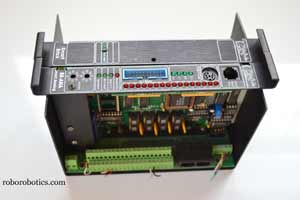Parts Needed for Animatronics
Building your first animatronic figure does not require an engineering degree or an internship for Disney Imagineering. With the parts and materials available today, building a simple animatronic figure takes work, but can be accomplished by one person.
![]()
The Outer Shell
The outer shell is what the audience sees. The appearance of the figure helps give it realism and adds to its overall character. Materials for the figure's outer shell may include:
- Hair
- Eyes (glass, plastic, or LED)
- Skin (foam latex or silicon-based)
- Clothing
- Accessories (eye glasses, hats, props, etc.)
- Fabric (for puppet-type animatronics)
- Metal (for robot-type animatronics)
In order to make skin for an animatronic figure much more supplies are needed. A figure's head, neck, hands or any other part that needs to be flexible, must first be designed and created. In order to pour the skin needed from foam latex or silicon-based material, a sculpture or life-cast must first be made. This requires either clay or alginate. Generally, to make a mold of the sculpture or casting, plaster of Paris, burlap, and additional clay are needed. The skin material can then be poured into the mold, using a mold release. Each material has a different procedure for making the final flexibile skin, such as foam latex is quite a bit different. There are some good reference videos to show you how to make animatronic skin. Manufacturers of the skin products typically also provide basic instructions on how to use each product.
Structure
This is the support framework of the animatronic figure. It includes the framing that supports the outer shell and mechanics of a figure. the structure is generally built out of composites, plastic, other metals, or wood. You will generally need the following tools to construct the structure of the figure:
- Bench vise
- Drill (good) or drill press (better)
- Drill bits
- Hack saw
- Small bolts and nuts
- Various screwdrivers and pliers
Mechanical
The mechanics components of the figure provide motion and life to a character. There are different components that are useful in animatronics to provide motion. Analog or digital pneumatic systesm, servo motors, linear actuators, DC motors, air bladders, cables, gears or cams, and stepper motors are all used to create movement of a figure. When a pneumatic system is used an air compressor, an air filter, air supply lines, T-connectors, poppet values, needle valves, and adjustable pressure valves are needed to control a cylinder. Mechanical parts must be designed reliably. Moving parts and connections that can wear out must be placed so they are accessible in the future for replacement.
Sound Components
Audio is needed for a good animatronic figure. In order to program sound with movement specialty electronics are needed. Manufacturers such as Gilderfluke, Blue Point Engineering, and Alcorn McBride made audio repeaters that are specifically designed for animatronics.
Motion Control Electronics
Animatronics control is typically performed by using electronics with embedded microcontrollers. Companies like Gilderfluke, Parallax, Blue Point Engineering, Brookshire Software, SeeTronics, and more make motion control cards that are designed for animatronic figures. In most cases an electronic control board is used to control timing of the figure and send out data for movement and sound. Additional electronic boards are used to translate the movement data to electrical voltage or signals to actuate a valve, motor or servo.
Computer
While a computer is not needed for show control during playback, they are very useful for programming show control and setting up audio files. Plan to have a computer available for program the figures, download the show control data to the animatronic control cards and the audio control cards. A computer is also used to set up limits of motion in motors and servo motors.
